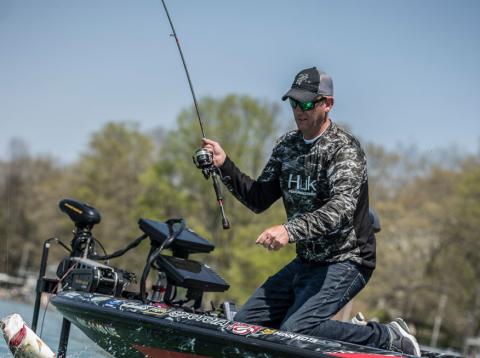Sage Johnson & Amanda Slavens | Originally published in GameKeepers: Farming for Wildlife Magazine. To subscribe, click here.
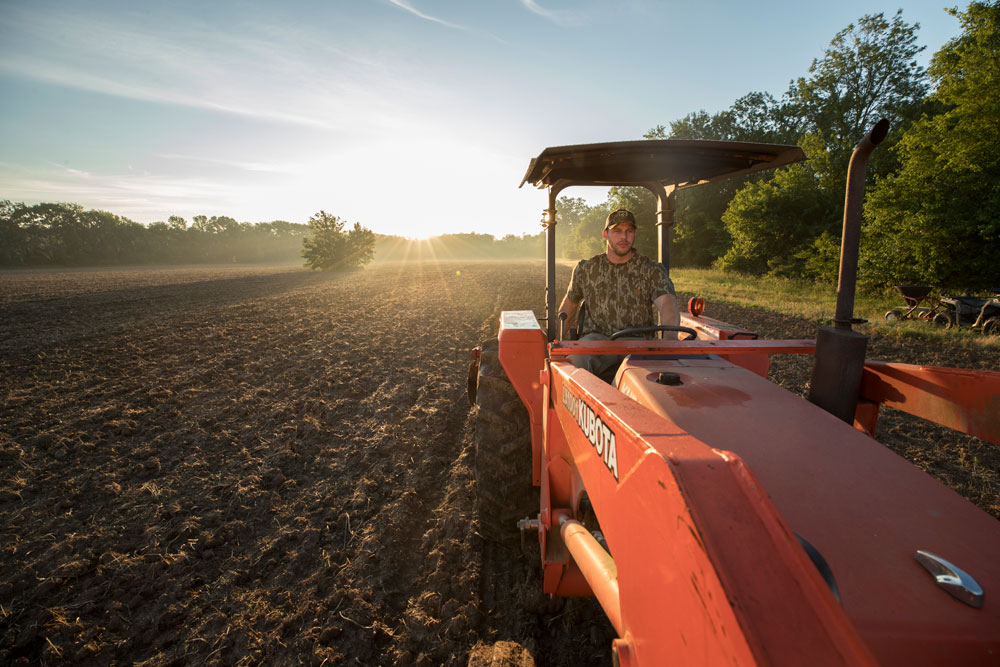
When it comes to managing acres of land, from removing invasive species, to building and maintaining roads and trails, to constructing food plots, the right equipment can make quick work of otherwise daunting (and costly) projects. Not all gamekeepers can meet the expense of multiple tractors with numerous implements to do all the jobs necessary to manage a property correctly. However, they can afford to rent the proper equipment.
Many equipment dealers now offer rental options, allowing you to utilize large-grade equipment without having to make a large up-front investment. Ed Hammersmith, CEO/President of Vail Products, a leading manufacturer of land clearing attachments suggests consideration of equipment rental before overlooking that dream project.
“What I tell my friends that own land or lease property with some buddies, is with the right equipment you can manage your land more efficiently and spend more time enjoying it,” Hammersmith says. “What too many people don’t understand is there’s an option out there that doesn’t require the upfront investment many are wary of.”
The rental market is growing in popularity, and for good reason – there are many benefits to utilizing machines like compact track loaders/skid-steers and attachments such as the Vail X Series brush-cutters, grapples, grubbers and trees saws, designed to increase productivity. Projects of all sizes, from clearing heavy brush, maintaining roads, building food plots or removing trees can benefit from the addition of compact equipment. Before you make the investment in purchasing your own machine, or hire someone else to get the job done, consider renting the equipment yourself.
The Benefits of Renting
Over the past few years, Hammersmith has spent a great deal of time showing other landowners how easy it is to manage their land with the use of the Vail attachments.
“The first concern from landowners is the cost, and rightfully so,” Hammersmith says. “Renting is the perfect alternative to ownership.”
If you’re in a hunting group that leases land or a small track owner, funds may be a big factor and renting equipment should be considered. Keith Forsythe, owner of Shreveport Tractor Inc., a three-generation, family-owned company in Shreveport, LA, has seen an increase in his rental business over the years.
“If you just have one project lined up, it’s probably not cost effective to purchase equipment,” Forsythe said.
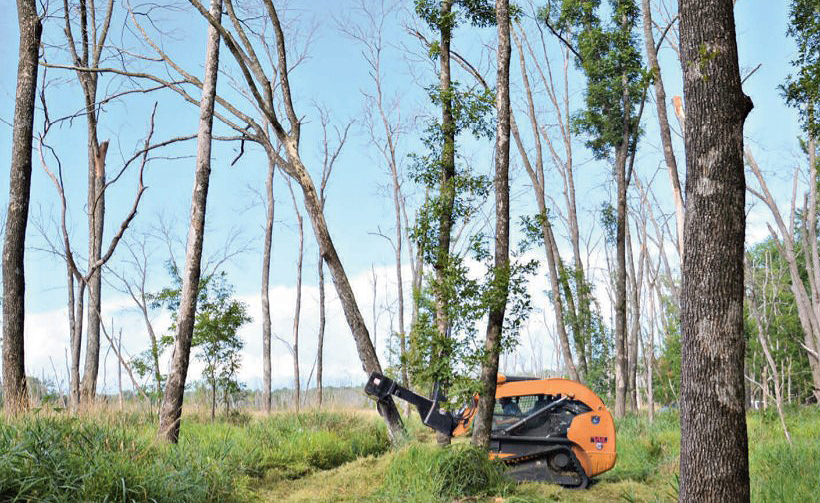
Another thing to consider is the importance of getting in and out of your property quickly with a minimal amount of disruption.
“I think it may be even more important on the small tracks of land,” says Hammersmith. “Projects that may take a few weekends with chainsaws and ATV’s may only take a few hours to complete with a rented loader and attachments.”
Other benefits of renting include:
- Equipment transportation and storage. One of the biggest benefits of renting equipment is it can be delivered to and picked up from your jobsite. You don’t have to arrange and pay for a trailer or build a garage or barn to store it.
- Maintenance and breakdowns. If equipment breaks down or malfunctions during your rental contract, you don’t have to repair it. In most cases, the dealer will deliver a replacement (be sure to read your rental contract for details to make certain).
Read the Fine Print
At its most basic, a rental agreement states that you will return equipment in excellent condition after using it for an allotted amount of time. But contracts vary from store to store, so be sure you are aware of specific details such as:
- Repair and replacement guidelines, including the amount of time you can expect to wait if equipment breaks down.
- Delivery and pickup times for the equipment.
- Specific billing and return policies.
- Any training provided to customers.
Understand What You’re Paying For
According to Forsythe, renting a skid-steer and attachment for a weekend will cost about $750- $900, depending on the size of the equipment. Most rental contracts include the following charges:
- Rental fees usually cover 8 hours of machine use per day, 40 hours per week, and 160 hours per month. If you use the equipment more than this, overtime charges may apply, so be sure to ask about the dealer’s policies.
- Fuel costs are in addition to the rental fees and should be taken into account when preparing your budget. Ask ahead of time how much fuel a particular machine uses and follow any fuel efficiency tips the dealer can provide, such as throttling down the machine for most uses.
- Delivery and pickup of the equipment is one of the benefits of renting, but be sure you know up-front what the dealer charges. It is usually a flat fee for local service, with additional charges for outlying areas.
- A damage protection fee usually covers most accidental and non-negligent damage such as wear and tear, theft and vandalism and is usually calculated as a percentage of the total rental amount. Be aware that all coverage has limitations, so you should read the fine print for more information.
- Cleaning fees may be charged if the equipment is excessively dirty when you return it. Make sure the bucket is Renting equipment makes better sense from several angles - it can save money, time and space, and there is no maintenance or repair to be concerned with. clear of dirt or mud, and rinse the machine thoroughly after use.
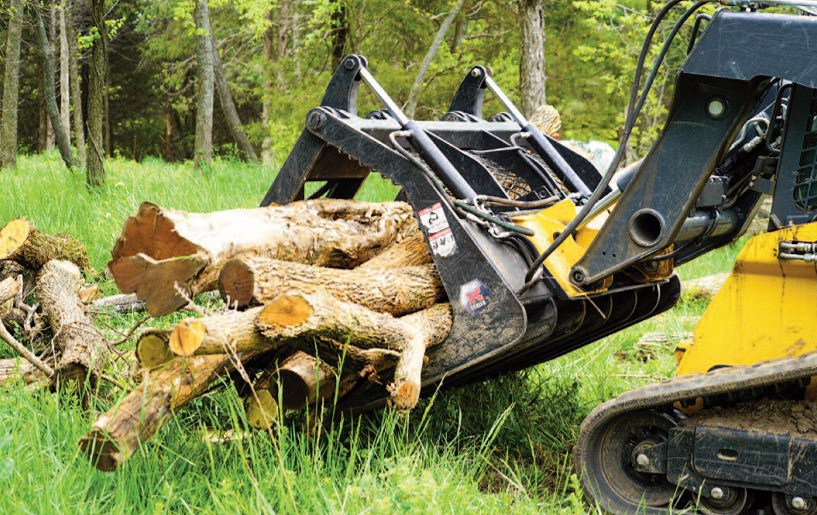
Attachment Rental
If you already own a skid-steer or track-loader, renting allows you to try different attachments before you make a purchase decision. If you find you are renting a specific attachment often, it may make more financial sense to purchase it. Finally, Forsythe advises finding a dealer that offers a wide variety of attachments for rent so that you have plenty of options in case you need something different half way through a project.
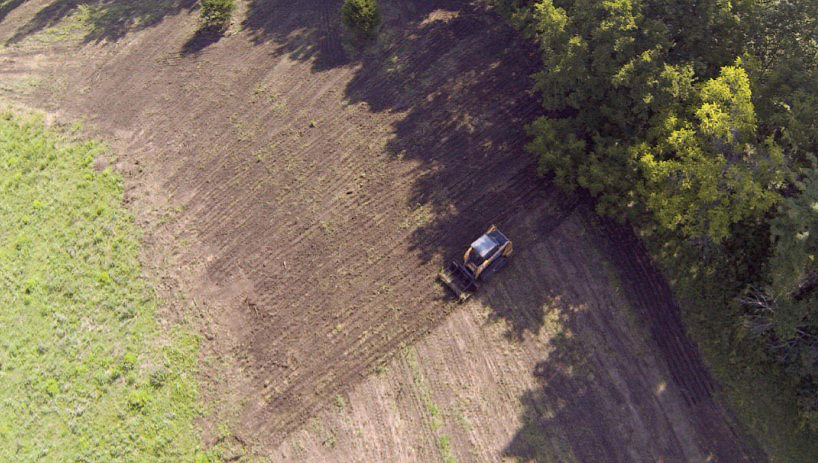
Make the Most of It
There are several things you need to do before you leave the dealership or take delivery of your rental equipment. First, Forsythe recommends going over the equipment with the dealer.
“You want to make sure there’s nothing wrong with the machine,” he says. “That way you won’t be held responsible for damage you didn’t cause.”
Secondly, take advantage of the training dealers offer. Understanding how to properly operate the equipment not only helps prevent accidents, but can also increase productivity and efficiency. Finally, before you take delivery of any equipment, make note of who to call in case of a break down or malfunction, so you don’t waste valuable time getting a replacement.

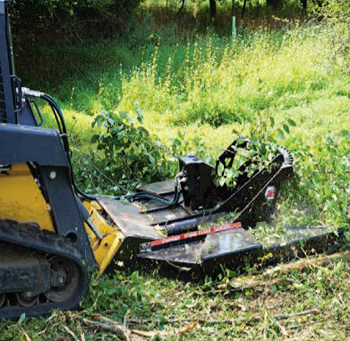
and clearing trees, brush, weeds, grass and debris.
This attachment can take down saplings 10 feet tall.
Like many land owners, Hammersmith mentioned he feels a connection to the land. “When I first started doing projects on my property, I was a little nervous, but I wanted the satisfaction of knowing I did it.” The equipment is relatively easy to run, but similar to buying any new tools, operating a skid-steer or track-loader with an attachment can take a while to learn how to maximize all of its functions.
While most gamekeepers already realize the return, Hammersmith adds, “It’s unbelievably rewarding. It’s really hard to explain how it feels to have a vision for what your land could look like and then do projects like building food plots or creating trails to navigate the property. If you have a vision, but funds and time are a little tight, consider renting some equipment for a long weekend and get out there and live your dream. Wrap up that project and enjoy the finished product for years to come.”
Vail Products developed the X-Series line of attachments because of their love of the outdoors, the need for tough tools and because of bad experiences with poorly built attachments from others in the equipment industry. To learn more about the Vail Products line of attachments for land management (including the Tree Saw, Brush Mower, Land Grapple, Grubber and more) visit www.VailXSeries.com.















